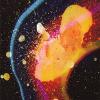Greetings, all.
I was wondering if we could discuss this issue a bit. For the purposes of simple exposure control, it seems common to store the log of the luminance of each pixel in your luminance texture. That way, when you sample the 1x1 mip map level and exponentiate it, you end up with the geometric mean luminance of the scene. This is done to prevent small, bright lights from dimming the scene.
I find that this works really well, but perhaps a little too well. I am using a 16F texture, and so the brightest pixel I can have is 65355. If I have a really dark nighttime scene, such that things look barely visible without any lights, and then I point a bright spotlight at the player (just a disc with a 65355-unit emission), it hardly affects the exposure at all. I would expect a bright light to sort of blind the player a bit and ruin her dark adaptation, so that the rest of the scene looks really dark. I have found that the light needs to cover nearly 20% of the pixels on the screen before it begins to have this effect.
So I switched over to using an arithmetic mean (just got rid of the log/exp on each end) and now it works more like what I would expect.
If you were in my shoes, would you switch to an arithmetic mean, or would you try to find exposure settings that will work better with a geometric mean?
FWIW, my exposure-control/calibration function is just hdrColor*key/avgLum, where key is an artist-chosen float value, and avgLum is the mean luminance (float). After that, I'm tone mapping with Hable's filmic curve. If you have any suggestions on how to improve it, that would be most helpful. I suppose I could also experiment with histograms and so forth, but I'm not sure if they're meant to solve this particular problem.




